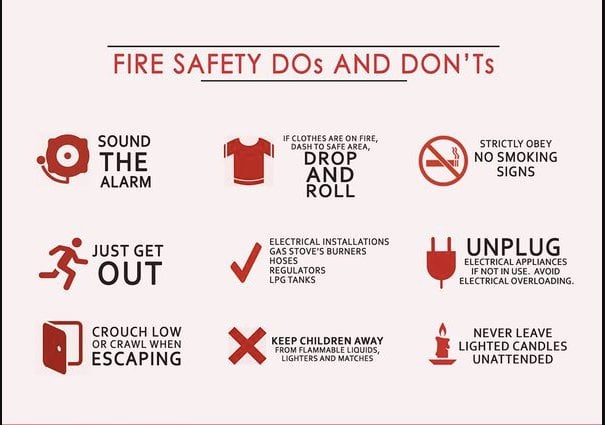
META DESCRIPTION: “Master the best practices for effective fire suppression with our comprehensive guide on fire extinguisher dos and don’ts. Stay prepared and enhance safety by understanding the right techniques and common pitfalls in fire management.”
In the midst of an emergency, knowledge can be a lifesaver. When it comes to fire suppression, understanding the correct use of a fire extinguisher can mean the difference between a minor incident and a devastating blaze. Read on for essential dos and don’ts to ensure you’re leveraging these tools most effectively for fire suppression.
Dos of Fire Extinguisher Use for Effective Fire Suppression:
Do Familiarize Yourself with the Extinguisher: Before an emergency arises, read the label, understand its operations, and ensure it’s suited for the expected fire types in that location (A, B, C, or ABC).
Do Use the PASS Technique:
Pull the pin.
Aim low at the base of the fire.
Squeeze the handle.
Sweep from side to side.
Do Check Regularly: Monthly inspections can catch pressure loss, damage, or corrosion, ensuring the extinguisher remains ready for effective fire suppression.
Do Ensure Easy Accessibility: Place extinguishers in clear, easily reachable locations, away from potential fire sources.
Do Train Everyone: Encourage every household or office member to learn how to use an extinguisher. The more people know, the better equipped they are during emergencies.
Don’ts of Fire Extinguisher Use for Effective Fire Suppression:
Don’t Use If the Fire Is Too Large: Fire extinguishers are designed for small, contained fires. If the blaze is spreading rapidly, evacuate and call 911.
Don’t Use Without a Clear Escape Route: Always ensure you have an easy way out. If the fire doesn’t diminish or if it spreads, you need to evacuate quickly.
Don’t Ignore Expiry Dates: Fire extinguishers don’t last forever. Check the expiry date and replace old units to ensure peak fire suppression capabilities.
Don’t Use the Wrong Extinguisher Type: Using a water-based extinguisher on an electrical fire, for instance, can be dangerous. Know the fire types your extinguisher is designed to combat.
Don’t Forget to Recharge: After any use, even a small discharge, ensure the fire extinguisher is refilled or replaced to be ready for future needs.
In conclusion, effective fire suppression relies on not just owning a fire extinguisher, but using it correctly. By following these dos and don’ts, you’ll ensure that you’re prepared to handle fires swiftly and safely. Protect your home and loved ones by staying informed and ready.

